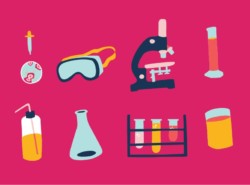
Searching for new treatment targets for triple negative breast cancer
Published: 10/9/19 1:48 AM
Dinny Graham
Although significant advances have been made in recent years in the diagnosis and treatment of breast cancer, the greatest improvements have been made for tumours with a good prognosis, i.e. those that are diagnosed early and express proteins called hormone receptors for estrogen and progesterone. These account for about 70 per cent of all breast cancers.
Hormone receptors pick up hormone signals, which control many aspects of cell behaviour, including increasing the growth of cancer cells. A cancer is called estrogen-receptor-positive (or ER+) if it has receptors for estrogen. ER+ and PR+ cancers can be identified with current biopsy tests and standard treatments for these tumours are generally effective. Around 15-25 per cent of breast cancers have a high number of receptors for the human epidermal growth factor (Her2), which is a protein that affects the growth of some cancer cells, and this type of breast cancer also has effective treatment options.
Tumours that lack all three of the above receptors are called triple negative breast cancers, and account for about 15 per cent of breast cancers. They are part of a diverse group of tumours which are often more aggressive and generally have poor outlook because there are no targeted treatment options available.
This study aims to remedy the critical gap in our understanding of how to treat patients with triple negative breast cancer by identifying a different hormone receptor that can be targeted with an effective therapy.
The two best known breast cancer hormone receptors, ER and PR, are members of a large family of nuclear receptors. Dr Dinny Graham and her team will go beyond ER and PR, to test whether other nuclear receptors can act as specific biomarkers for triple negative breast cancers or may represent new treatment targets in triple negative disease.
Once identified, the research team aims to develop personalised tests that can more accurately predict the outcome of treatment options, and also lead to new more effective treatments that target specific features of triple negative breast cancer. This will not only spare patients from the side effects of untargeted chemotherapy, but will reduce the mortality rate from triple negative breast cancer.